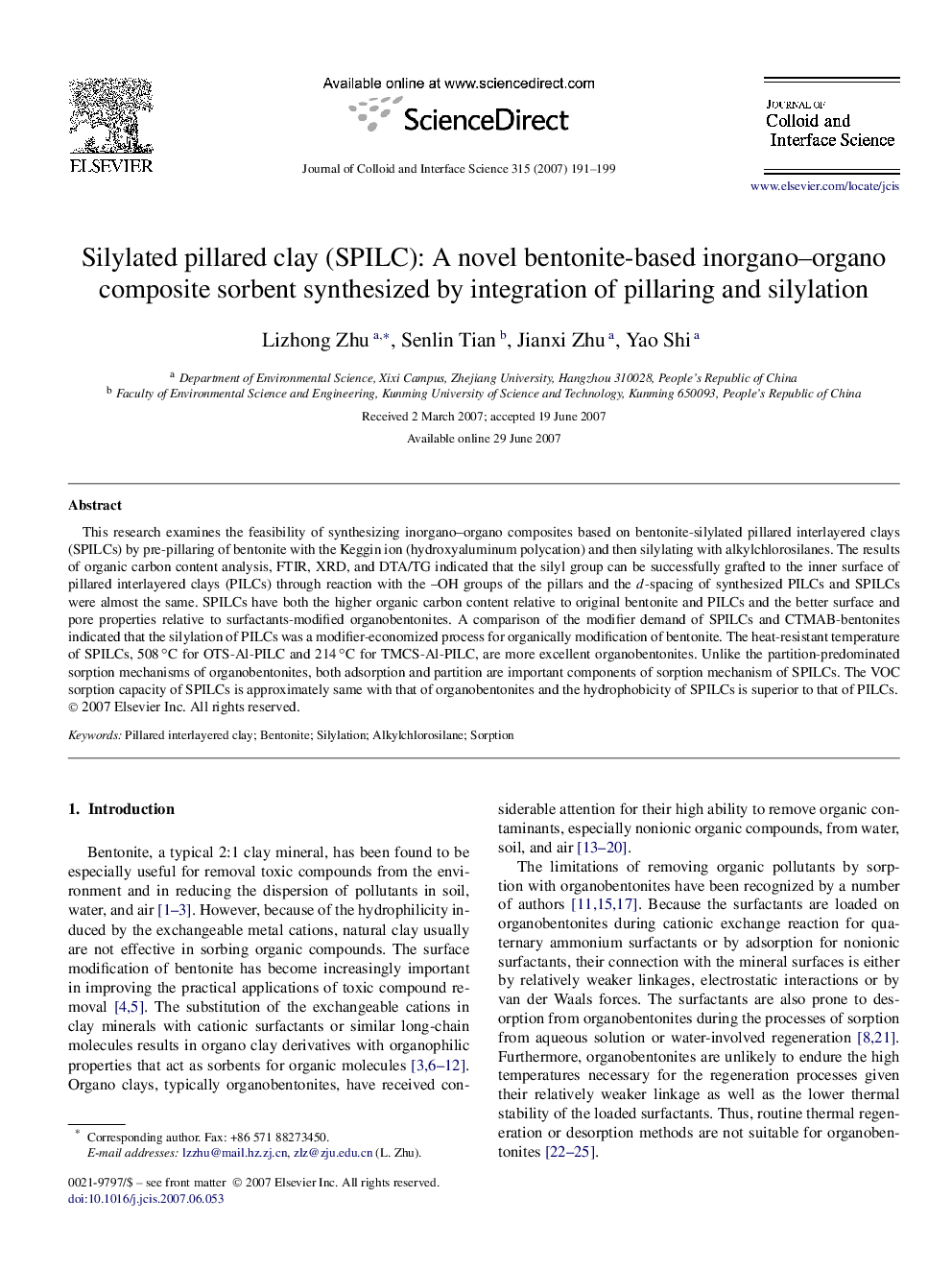| Article ID | Journal | Published Year | Pages | File Type |
|---|---|---|---|---|
| 612277 | Journal of Colloid and Interface Science | 2007 | 9 Pages |
This research examines the feasibility of synthesizing inorgano–organo composites based on bentonite-silylated pillared interlayered clays (SPILCs) by pre-pillaring of bentonite with the Keggin ion (hydroxyaluminum polycation) and then silylating with alkylchlorosilanes. The results of organic carbon content analysis, FTIR, XRD, and DTA/TG indicated that the silyl group can be successfully grafted to the inner surface of pillared interlayered clays (PILCs) through reaction with the OH groups of the pillars and the d-spacing of synthesized PILCs and SPILCs were almost the same. SPILCs have both the higher organic carbon content relative to original bentonite and PILCs and the better surface and pore properties relative to surfactants-modified organobentonites. A comparison of the modifier demand of SPILCs and CTMAB-bentonites indicated that the silylation of PILCs was a modifier-economized process for organically modification of bentonite. The heat-resistant temperature of SPILCs, 508 °C for OTS-Al-PILC and 214 °C for TMCS-Al-PILC, are more excellent organobentonites. Unlike the partition-predominated sorption mechanisms of organobentonites, both adsorption and partition are important components of sorption mechanism of SPILCs. The VOC sorption capacity of SPILCs is approximately same with that of organobentonites and the hydrophobicity of SPILCs is superior to that of PILCs.
Graphical abstractThe mechanism for the formation of SPILCs is generally a two-step process: (1) pre-pillaring of bentonite with the Keggin ion, and (2) silylating PILC with alkylchlorosilanes.Figure optionsDownload full-size imageDownload as PowerPoint slide
